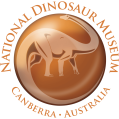Shark Tooth Types

The Phosphate Beds of Morocco are an incredible fossil site near Khouribga.
The Phosphate Beds of Morocco are an incredible fossil site near Khouribga. Found here are a plethora of fish vertebrae and shark teeth, as well as skeletons of Mosasaurs, Crocodiles, Pterosaurs and other marine reptiles.
 Otodus Obliquus
Otodus Obliquus
An extinct genus of mackerel shark that from the Paleocene and Eocene approximately 60 – 45 million years ago, growing up to 30 feet (9 metres) long and preyed mostly on marine mammals, large bony fish as well as other sharks.
 Carcharias Hopei
Carcharias Hopei
An extinct genus of sand tiger shark from the Paleocene and Eocene approximately 60 – 45 million years ago, growing up to 8.5 feet (2.5 metres) long and preyed on mostly small fish, young sharks and rays.
 Cretolamna Appendiculata
Cretolamna Appendiculata
An extinct genus of mackerel shark from the Cretaceous and Paleogene approximately 90 – 50 million years ago, growing up to 12 feet (3.6 metres) long and preyed on large bony fish, turtles, mosasaurs, squids and other smaller sharks.
 Cretolamna Biauriculate
Cretolamna Biauriculate
An extinct genus of mackerel shark from the Cretaceous and Paelogene approximately 90 – 50 million years ago, in the same genus as Cretolamna appendiculata this shark shares many of the same features such as common growth length as well as diet.
 Striatolamia Bacrota
Striatolamia Bacrota
An extinct genus of shark that is an ancestor of the modern day sand tiger sharks (grey nurse sharks, spotted rag tooth shark), living in the Eocene and Paleocene approximately 50 – 60 million years old, little is known about the size of the shark itself but teeth sizes vary from 19 – 38mm in length.
 Myliobatis Raouxi
Myliobatis Raouxi
An extinct genus of eagle ray from the late Paleocene approximately 60 – 55 million years ago, information regarding Myliobatis raouxi is quite limited and estimated sizes of this extinct eagle ray would be close to that of modern day eagle rays of 240cm (2.4 metres), their diet would have consisted of molluscs, crustaceans as well as small sea floor dwelling fish.
Myliobatis Dixoni
An extinct genus of ray from the Cretaceous approximately 65 million years ago, information regarding Myliobatis dixoni as with its kin (Myliobatis raouxi) is quite limited but with knowledge of other rays we can assume that it was a similar length to that of Myliobatis raouxi (240cm or 2.4 metres) and had dietary requirements similar to that of other rays which consisted of molluscs, crustaceans and small sea floor dwelling fish.
